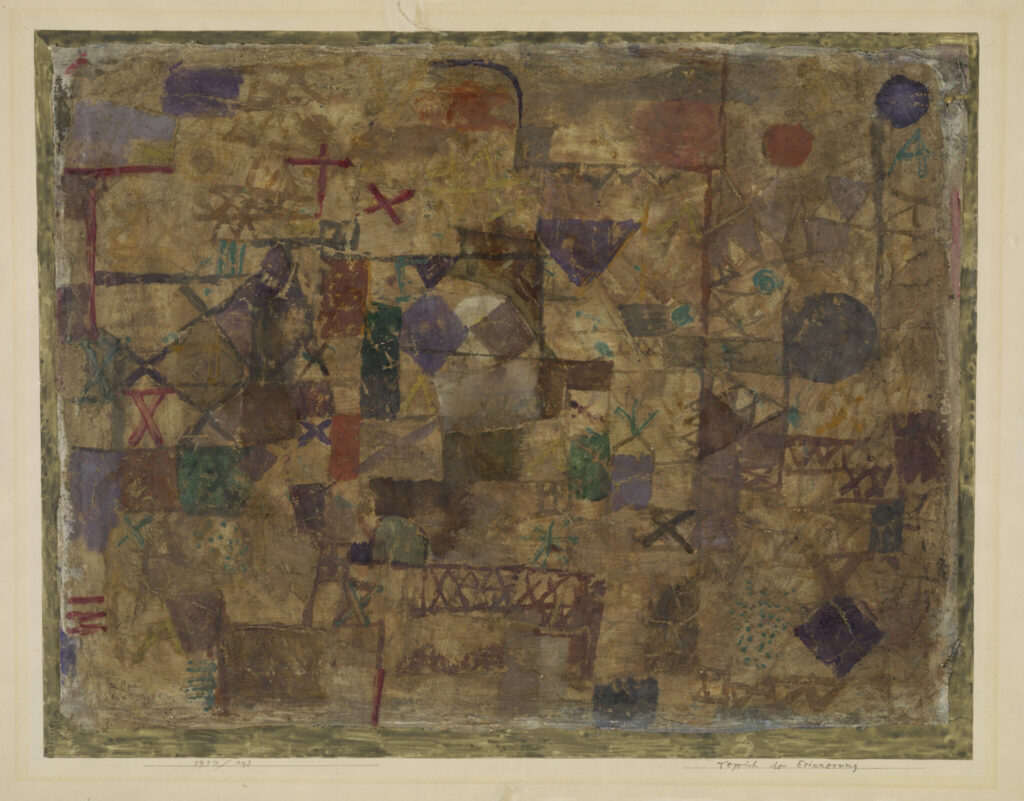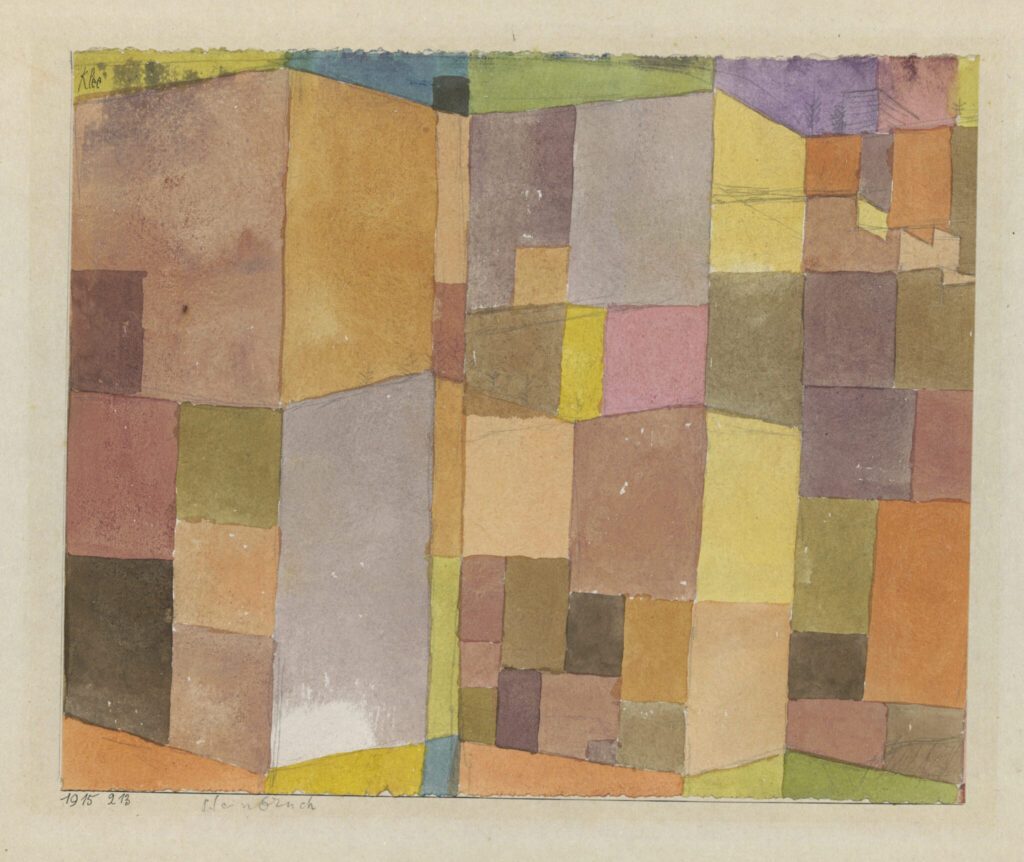
It is argued that the Modernists’ interest in the abstract patterns reflective of rural weavings of North Africa was a reaction against the Orientalism which dominated the art of the period.
Deconstruction of the Orientalist stereotypes projected in the 18th– and 19th-century western art marks the beginning of the modern perspective of the Orient spearheaded by Paul Klee, Wassily Kandinsky, and others.

Carpet of Memory
If viewed exclusively in this contest, that is, as a rebellion of the early 20th century art against romanticised realism of the past; it is as if an abstract and highly evocative image revealed itself from beneath seductive layers of stylized veneer.
Paul Klee’s 1914 journey to Tunisia was not one of disenchantment; it was a journey of discovery.
The heat, dust and streets bustling with ordinary men and women, away from the Oriental courts depicted in paintings by his predecessors, offered a glimpse into a different world: an infinite landscape, and, in the midst of it, clusters of homes in sun-scotched limestone inhabited by people in love with colour.
Colour and unintelligible signs, as if remnants of a long-forgotten language, dominate the arts of the Amazigh tribes, better known as Berbers, of the southern coast of the Mediterranean and the land stretching down to the sub-Saharan Africa.

Quarry
It was Klee’s contact with these enigmatic symbols and geometric forms woven chaotically into course textiles in daring colours that may have become an important source of his artistic inspiration.
In his Carpet of Memory, his earliest abstract painting, Klee proposes the idea of art as an exploration of the passing of time, the grounding out of universal memory, or what Jung called, the collective unconscious.
The carpet in his painting, as many of those he had seen during his journey, is a fabric of memory; it is faded and consumed by a lifetime of use.
Many of Klee’s painting resemble carpets, but not those fine and opulent, meticulously designed masterpieces typical of Islamic courts of the Middle East, but, instead, the primitive, woollen works by the Berber people of North Africa.
The connection between Modernism and by extension the contemporary art with Berber textiles has been a subject of intense scholarship for a few decades.
Paul Klee’s and Le Corbusier are the best-known artists whose work has been scrutinized in this respect.
Jurgen Adam, as well as Gerhard Blazek, both foremost experts on Berber rugs, have contributed to this discourse on numerous international exhibits and lectures.
Parallels between genuine Berber rugs and the Modernist paintings may appear obvious and while the direct inspiration remains a subject of debate, the presence of Berber rugs on the western market at the beginning of the 20th century has most likely played part in the transition from the realism to abstract, a return to art as a spiritual experience.
Piotr Wesolowski
Photos courtesy Zentrum Paul Klee, Bern
Paul Klee (1879 − 1940)
Teppich der Erinnerung, 1914, 193
Carpet of Memory, 1914, 193
oil on primed linen on cardboard
37,8/37,5 x 49,3/50,3 cm
and
Steinbruch, 1915, 213
Quarry, 1915, 213
watercolour and pencil on paper on cardboard
20,2 x 24,6 cm
Additional reading Paul Klee Carpet of Memory
Paul Klee
